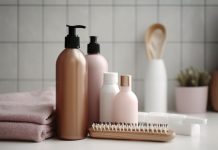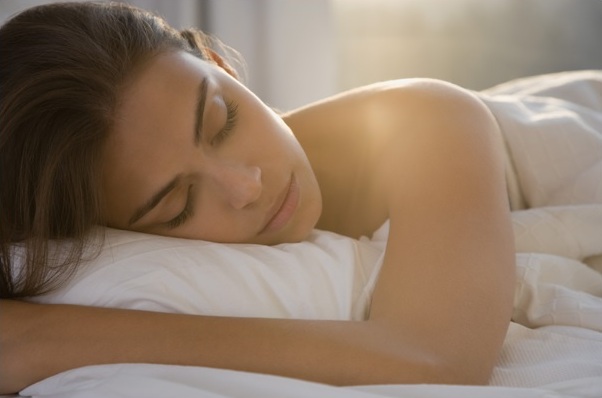As humans, we spend about a third of our lives sleeping soundly. For anyone with sleep disturbances, however, this statistic is greatly reduced. Whether you suspect you may suffer from sleep apnea, chronically snore, have trouble falling asleep, fall asleep at inopportune and inappropriate times or have a hard time staying asleep, suffering with sleep disturbances greatly impacts your quality of life. You may have developed health problems from your lack of sleep or go through your day requiring a lot of caffeine just to perform properly at work. You may experience irritability and mood swings that may be impacting your relationships with family, friends and your boss.
If your health care practitioner has referred you to an independent sleep study lab to undergo testing, here is what you can expect to experience during your trial.
What Exactly Is A Sleep Study?
A sleep study is an in-depth test that utilizes many different types of monitoring equipment to determine if you have a sleep disorder. Based on the results of the test and your unique sleeping and disturbance pattern, sleep specialists will be able to determine what type of disorder you suffer from; the results are sent to your doctor for evaluation and a follow-up appointment.
Read Also: SLEEP AND THE OVERALL PHYSICAL AND MENTAL DEVELOPMENT IN CHILDREN
The Main Types Of Sleep Studies
There are three major types of sleep studies performed at labs. A Polysomnogram, PSG, is an overnight study in which the brain and eye movements are closely monitored. Additionally, your heart rate, blood pressure, motion and oxygen levels are also closely tracked. If you suspect you may have sleep apnea, sleep-triggered seizures, movement disorders and conditions caused by excessive daytime sleepiness, you will most likely partake in a PSG study.
Multi-Sleep Latency Test, or MSLT, is exclusively performed during the day. This test gives you five, 20-minute nap opportunities that are spaced two hours apart. An MSLT study typically follows a PSG sleep study to ensure that your prescribed treatments are working properly. If you are able to fall asleep for the MSLT, your brain and eye movements are monitored, and the sleep stages you enter will be recorded as well. An MSLT is also used to detect narcolepsy.
The Maintenance of Wakefulness Test, or MWT, is a daytime sleep study that is used to gauge how awake and alert you are throughout the course of the day. An MWT typically follows a PSG study, and it can help determine if your sleepiness is a concern on the job or while performing normal day-to-day activities. If you work for a company as a driver, operate heavy machinery or travel a lot for work, your company may require that you partake in an MWT study whether or not you have a history of sleep deprivation or other sleep-related disorder.
Preparing For The Sleep Study
For the most part, your sleep study specialist will want you to perform your normal daily and nightly routines in the days leading up to the test. In order to be diagnosed properly, your sleep study specialist needs to see you at your worst. If you try to alter your normal routine, you may impact the results of the study.
In most cases, you will be arriving at the sleep study center after dinner. You should have eaten dinner at your normal time, prior to arriving to the study. If you take any medications, it is important that you bring those with you to the test. Pack your normal pajamas or comfortable clothes, and bring along your normal toiletries, makeup and other essentials pertinent to your morning routine. You are typically encouraged to bring creature comforts from home. If you like to sleep with a small fan or read a novel before bed, you will be encouraged to bring these items. You can also bring your favorite pillow, blanket or stuffed animal with you in many cases.
What To Expect During The Study
When you arrive to the sleep study clinic, you will be greeted by the licensed professional who will be assisting you throughout your test. They will go over your paperwork, have you fill out any additional information or forms and explain the process in greater detail so you have a better understanding of what to expect. Your sleep technician may require that you provide additional information on your health history. In some cases, your sleep study clinician may require you to give a blood sample. Your blood pressure readings, temperature, resting heart rate and other vitals are typically taken prior to beginning the study.
While it is a clinical setting, most sleep study rooms are actually set up to be very cozy and comfortable. Many labs have wall art, aesthetically pleasing bedding and other creature comforts to help you relax. Most sleep study centers have rooms that look a lot like hotel rooms.
After collecting your health information, paperwork and vitals, you will have a number of electrodes placed on your scalp, face, neck and chest. These electrodes measure your facial movements and brain activity. Elastic belts are placed around your chest to measure breathing. Finger monitors detect your oxygen levels. EKG monitors show your heart rate and its rhythm. Clear nasal tubing and small throat microphones may also be utilized to detect snoring and breathing. While all this equipment may make it hard to sleep, you may be surprised to find out that you slept a lot more than you think you did once the study has concluded.
After The Study
After the test is over, you will fill out a bit more paperwork then shower and get ready for your day as usual. Your information is then sent to your doctor, and the results are reviewed with you within 10 days.
The Becker Ear Nose & Throat Center offers an extensive snoring & sleep services in New Jersey & Philadelphia. Their professional and caring staff will work with your medical practitioner to get to the root of your sleep woes. You can find out more about them here: www.beckerent.com.










